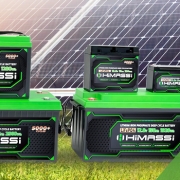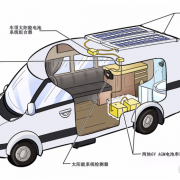Energy storage batteries include AGM replacement battery and custom lithium battery pack, which are widely used in various fields, such as UPS, solar system, wind energy storage, back-up power, RV, marine, etc. In fact, the batteries especially custom lithium battery pack used in most energy storage batteries are lithium iron phosphate batteries. As […]
A Letter to Battery Lovers, Thank you for your long-term support and trust in Shenzhen Himax Electronics! We are going to attend HKTDC Hong Kong Electronics Fair (Spring Edition) 2023 at Hong Kong Convention and Exhibition Center in Wanchai, Hong Kong, and we hope to discuss and communicate with you through this opportunity so that […]
“Australia’s largest and most anticipated clean energy event.” All-Energy Australia is the country’s most anticipated event in the clean energy sector’s annual calendar. It is free-to-attend, business-to-business conference and networking forum hosted alongside an impressive exhibition showcasing renewable energy, clean energy, sustainable transport, and energy efficiency. OVER 250 Exhibitors! Himax battery also participated in this […]
Part of RV ownership is maintenance. In this video, we replace our motorhome’s 4 house batteries and talk about some things we’ve learned about battery maintenance. We hope that you can learn from our mistakes to get the most out of your RV’s battery life. We replaced 4 6-volt golf cart batteries with 4 new […]
Battery capacity (how many amp-hours it can hold) is reduced as temperature goes down, and increased as temperature goes up. This is why your car battery dies on a cold winter morning, even though it worked fine the previous afternoon. If your batteries spend part of the year shivering in the cold, the reduced capacity has to […]
By now, the winter has been successful in many areas. Climate experts predict that the cold air may hit us frequently this winter, and we have ourselves prepared to prevent the cold. Will the batteries, the essential energy supply, and the energy storage device that we live in, also be prepared for the cold days? […]
Definition of Series and Parallel Connection of Lithium Batteries Due to the limited voltage and capacity of the single battery cell, the series and parallel connection is needed in the actual use to obtain higher voltage and capacity, so as to meet the actual power demand of the equipment. Lithium batteries connected in series Add […]
When it comes to the words’ lithium battery’ it’s safe to say that lately, these two words have generated a lot of confusion, fear, and speculation. So, it’s no wonder you might ask yourself, “why on Earth would anyone use Lithium batteries?” But rest assured, we’ve done our homework. At Himax, we’ve dedicated over a […]







